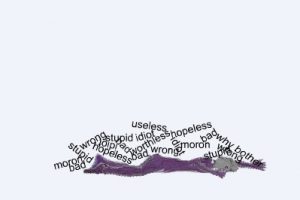I remember my first realization that violence impacts learning. I’d been sitting in women’s kitchens listening to their stories for a while. I had found them through local programs: adult literacy, job training, upgrading, each woman had agreed to be interviewed. After stilted phone calls, and lengthy drives down dirt roads, I found myself in their kitchens, drinking endless mugs of strong tea, and listening, hour after hour.*
I wanted to know about the reading and writing practices in their lives, the need that got them to their programs. Many of their answers surprised me. But most startling to me then were their stories about violence in childhood. So many told me about neglect, relentless mistreatment at home, the ways violence and put-downs continued at school. I hadn’t asked for these stories. I didn’t know to ask. I didn’t know what these experiences meant for their learning—their struggles to learn.
They told me about violence that continued, the men who sabotaged their studies, or simply didn’t support, and the challenge to make change in their lives. Slowly the picture came into focus, the way violence shaped their engagement with schooling. Too often they were prevented from attending school: staying home sick and sore, looking after siblings, doing chores. When they could get to class, they couldn’t learn, couldn’t ask questions, or seek help, they told me. “I was too shy” they said, again and again. They blamed themselves! But I wondered how self-protection shaped the silence they called shyness.
That was the first conscious glimmer I had that violence impacts learning. Since then, more than thirty years ago now, I haven’t stopped asking questions, hearing stories. I am always eager to understand more about the shape and complexity of these impacts. I want to know more about how they play out in classrooms, and in all the ordinary moments in life, where learning happens. I have also led numerous workshops asking others what they hear, see, and feel, that tells them that violence impacts learning.
In recent years, active MRIs have allowed us to learn more about the brain. So, I continue to read avidly, take online courses, delve into the latest neuroscience. I listen too to the trauma counsellors who are putting the new knowledge into practice, learning more from their clients. I always look for what might be useful for educators, as we focus on teaching and learning, and what we too can take from the latest research to support our work.
More educators now, are exploring the implications of this new knowledge. We are learning about the power of breath and body-centred work, to settle the nervous system, to call us home to the present, to the possibility of learning. There are a myriad of small things that can make a difference to create successful learning and teaching. I’ll tell you more over the next weeks!
Now I want to know: what do you hear, see, and feel, that tells you that violence impacts learning? What do you want others to know about what makes a difference?
* I wrote about these stories and what I learned, first in my doctoral thesis: “Something in my mind besides the everyday”: Il/literacy in the context of women’s lives in one Nova Scotian County. (University of Toronto, 1989.) Then I re-worked what I learned into the book: “Something in my mind besides the everyday”: Women and literacy. Toronto: Women’s Press, 1990.






Leave a Reply
We want to hear from you